WA5IYX low-VHF Es NTSC vs ATSC

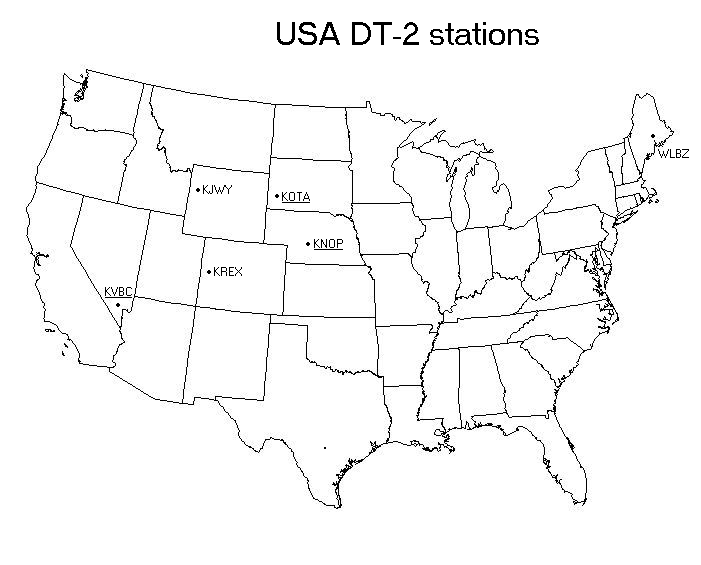
2 KVBC NV Las Vegas 1053 mi @ 300° ??-??-2009 ????
2 KNOP NE North Platte 819 mi @ 352° 07-13-2009 1115
2 KOTA SD Rapid City 1040 mi @ 347° 02-13-2010 2012

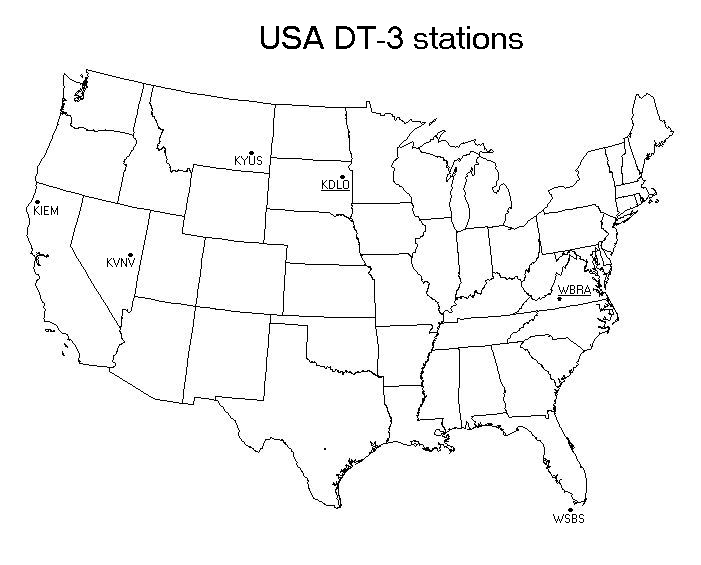
3 KDLO SD Florence 1071 mi @ 3° 07-13-2009 1350
3 WBRA VA Roanoke 1187 mi @ 58° 07-28-2009 1419
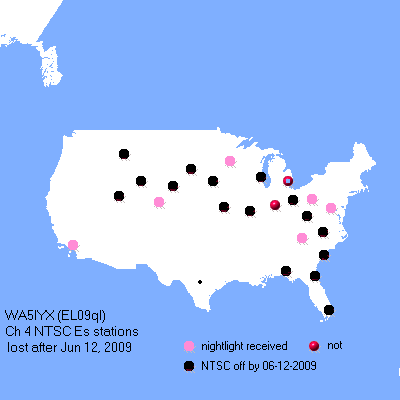
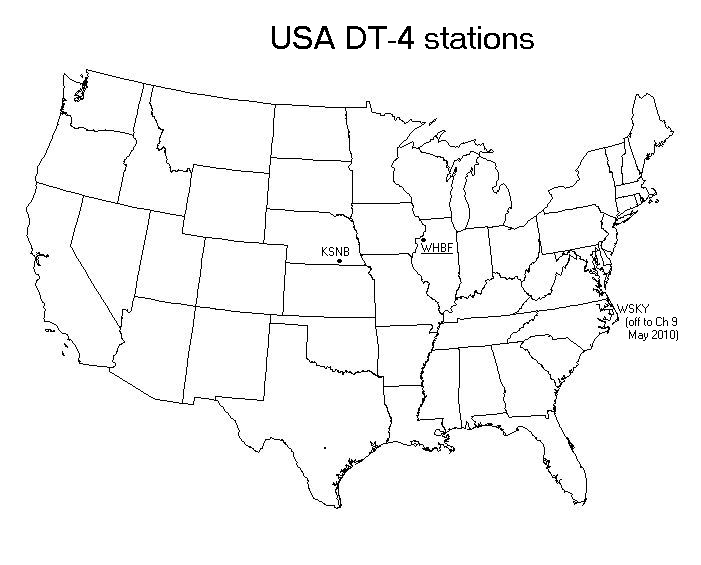
4 WHBF IL Rock Island 950 mi @ 26° 07-15-2009 1308
move cursor over station for location (state-city),
date (mm-dd-yyyy), and time (CST) of first logging
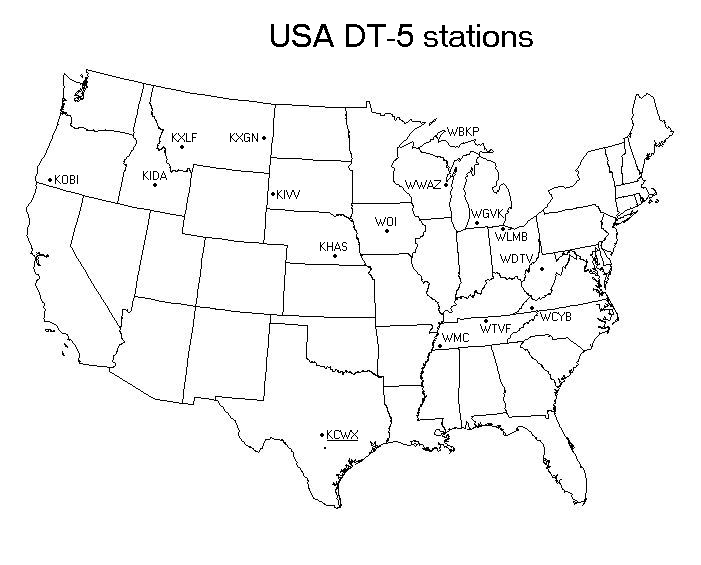
5 KCWX TX Fredericksburg 46 mi @ 359° 07-02-2009 0908
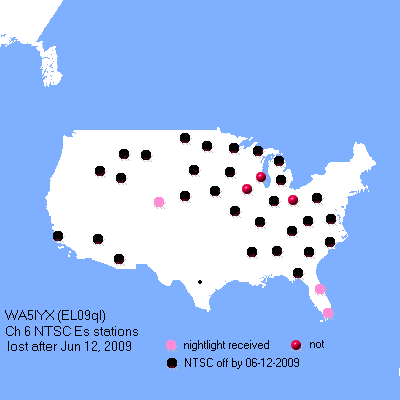

(impeded by "Franken-FM", aka KFLZ-CA-6, 500 w, 6-mi east)
6 WUOA AL Tuscaloosa 748 mi @ 65° 06-18-2010 1254
6 WABW GA Pelham 873 mi @ 79° 06-18-2010 1315
6 WCES GA Wrens 997 mi @ 71° 06-10-2011 1657
Being ionospheric, Es propagation can still exhibit dispersion effects (slightly different
frequencies following different paths/fading, and thus introducing time delays) - though not
as drastic as with the (thick-layer) F2 mode.
Unlike NTSC Es, where one could get enough video to perhaps enable an ID with coherent
propagation thru just over c. 1 MHz of the video carrier, ATSC has its video/audio spread
out over the ENTIRE 6-MHz wide channel so nearly all of that (within whatever bit-rate error
the tuner is designed with) is required for a decode to take place. That with the inherent
Es fading, multipath, co-channel interference (both analog/DTV) all conspire to diminish the
chances of any sustained decoding (making DTV Es usually pop in for short-lived bursts, much
akin to what meteor scatter on analog looks like).
For some samples of my DTV Es decodings on YouTube:
WHBF-DT-4.1 Jul 2009 KOTA-DT-2.1 Feb 2010 KVBC-DT-2.3 Apr 2010 KVBC-DT-2.1 Apr 2010
These were exceptionally long-duration decode events - to catch many one would have to almost
be running a continuous recording device. Most of the Es sessions might result in only seconds
worth (if any) of decoded data over several hours - hardly inspiring for any newcomers to this
facet of DTV-DXing!
And, for those with equipment that can tune the DTV pilots (310 kHz above the lower channel
edge - e.g., 54.310 for DTV-2) the results can be even more frustrating than waiting for a
DTV tuner "meter" to get high enough. A very strong pilot may mean that the propagation is
just focused there (vs the needed entire 6-MHz of the channel) so little chance of a decode.
DTV "meters" are indicators of overall quality (low errors in bit stream) - not pilot level.
Also, two DTV signals competing on Es is a no-win situation unless one gets c. 15 db above
the other (with NTSC one could get multiple IDents at once, often different audios & videos).
WAV sample of two 54.310 DTV pilots (c. 5 Hz apart) via Es from Jul 2009 on Yaesu FT-847
WavePad display example from May 2010.
A real-time view on a spectrum analyzer of a propagated DTV channel during an Es event ought
to be very revealing as it could show the MUF moving to and fro across the 6-MHz. The view of
such with NTSC (with the major signal peaks at the video, audio, and colorburst carriers -
i.e., 1.25, 5.75, and 4.83-MHz above the lower channel edge, respectively) would show less
detail. A recent sample of what a sharp Es MUF can do to NTSC, XEWO-2 on May 24, 2010.
A DTV signal under such limited-bandwidth circumstances would clearly never decode.
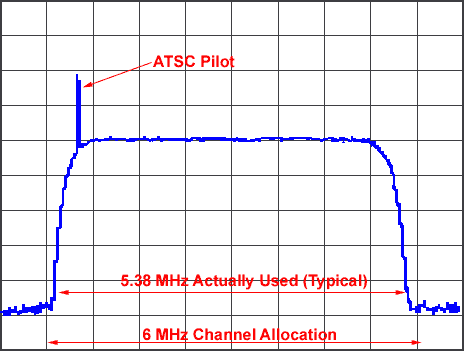
for more info
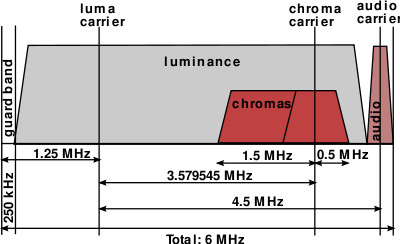
Last Modified: Jun 10, 2011










